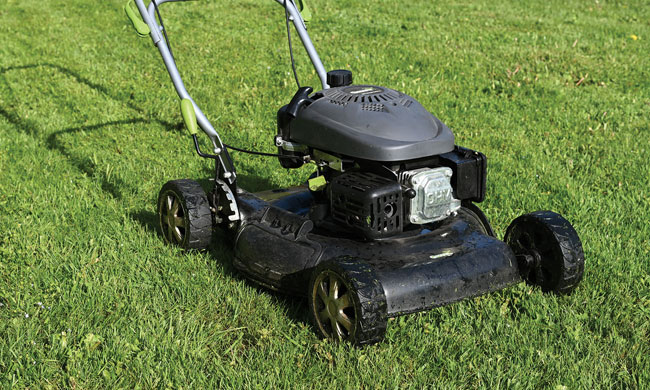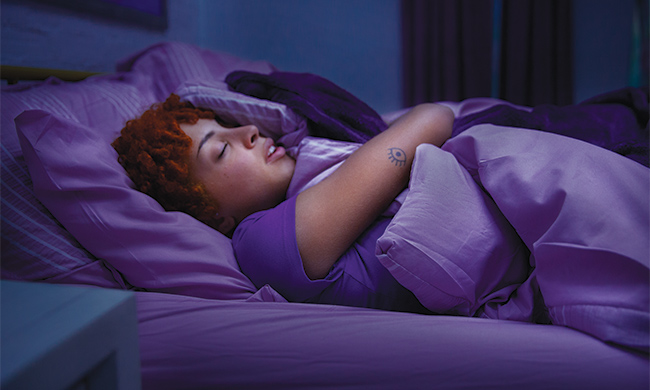Live Better
SMA and the new miracle drug Spinraza

Spinal muscular atrophy, or SMA, is a genetic disease that attacks nerve cells in the spinal cord. These nerve cells, known as motor neurons, communicate with the voluntary muscles in the body, such as those in the arms and legs. As more neurons are lost, muscles start to weaken and breathing, crawling, swallowing, and walking can become more difficult. It also can be difficult for those with SMA to control movements in their heads and necks. Though SMA runs in families, parents can exhibit no symptoms but still carry the gene. There are many types of SMA, and, according to the National Institute of Neurological Disorders and Stroke, the type of SMA is determined by the age of onset and the severity of symptoms. SMA Type I is evident at birth or within the first few months of a child being born. Symptoms may include difficulty swallowing, feeble movements of the arms and legs, loose limbs and trunk, impaired breathing, and a weak sucking reflex. SMA Type II is evident between the ages of six and 18 months, and the legs are typically more impaired than the arms. An early indicator may be a baby who is not crawling or walking. SMA Type III may be evident when a child reaches his or her toddler years, but sometimes does not appear until adolescence. When a child has SMA Type III, he or she may have trembling fingers and may experience difficulty getting up from a sitting position. Children with SMA Type II or Type III are at an increased risk of respiratory infections.
What causes SMA?
According to the Muscular Dystrophy Association, chromosome 5 SMA, the most common form of SMA, is caused by a deficiency of SMN, a motor neuron protein. This protein is necessary for normal motor neuron function, and a deficiency of SMN is caused by mutations on chromosome 5 in the SMN1 gene. Mutations in other genes may also cause SMA, and such cases are referred to as non-chromosome 5 SMA.
What are the symptoms of SMA?
There are various types of SMA, and the symptoms can vary depending on the type of SMA a person has. The following are some of the symptoms associated with the various types of SMA.
- Type 1: Type 1 is the most severe type of SMA. When a child is type 1, he or she may have difficulty supporting his or her head and sitting without help. Difficulty swallowing and weakness in the arms and legs may also occur. The muscles that control breathing also can be compromised when a child has type 1 SMA, and breathing problems can affect a child’s life expectancy.
- Type 2: Type 2 SMA typically affects the legs more than the arms. Type 2 SMA affects children between six and 18 months of age, and such kids may be able to sit, stand or walk with help.
- Type 3: The mildest form of SMA, type 3 may be referred to as juvenile SMA. Children with type 3 can often stand or walk without help, but they may have difficulty climbing stairs, getting up from a chair or running.
- Type 4: Type 4 SMA begins in adulthood, and men and women may experience muscle weakness, twitching or breathing problems. Physical therapy can help men and women better manage their symptoms, which typically only affect the upper arms and legs.
Recently the FDA approved an amazing new drug Spinraza to treat symptoms of SMA and prolong these life of individuals taking Spinraza. With a few injections, patients with SMA may be able to gain muscle strength and live longer by a year or more. It cost $125,000 an injection, and in the first two months one takes 4 injections in the spine. That’s half a million dollars for the first four shots. Subsequent costs for this possibly lifelong therapy are expected to be about $375,000 annually, with about three injections required each year. While this may seem extremely expensive the drug was developed to save lives, along with some resources available to help individuals requiring the drug. With coverage being more readily available to those effected the most, starting with SMA type I. Remember if you are trying to obtain Spinraza use every resource available at your disposal and educate yourself on the drug, available resources, and your healthcare. Don’t be afraid to ask questions and challenge your neurologist who would prescribe Spinraza along with your insurance representative, and if you have to, seek out a social worker for assistance. Be your own advocate. Take into account this drug has been developed and approved in a significantly short amount of time. Spinraza is for a relatively low percentage of the population, lots of money and resources were put into the development of this drug. For more information and resources go to SMAnewstoday.com. Remember to connect yourself with other individuals with SMA to share resources and connect with others who are going through the same thing you may be experiencing with SMA.
Parents can also learn more about SMA by visiting the Muscular Dystrophy Association online at www.mda.org & www.curesma.org
Live Better
Tips to make your AC more energy efficient, sustainable

(Family Features) Updating your HVAC (heating, ventilation and air conditioning) system to cool your home in a smart and sustainable way involves several steps that not only improve energy efficiency but also reduce environmental impact.
Consider these tips from the heating and cooling experts at Carrier to help make your cooling system more eco-friendly:
- Upgrade to an Energy-Efficient HVAC System. If your HVAC system is outdated, consider replacing it with a more energy-efficient model. Look for systems with an Energy Star or high SEER2 (seasonal energy efficiency ratio) rating, which indicates better energy efficiency. The higher the SEER2 rating, the more efficient the unit. Financial incentives for installing a higher-efficiency system are available through the Inflation Reduction Act of 2022. You can also shop for rebates from manufacturers and utility companies.
- Look for a Carbon-Free HVAC System. Heat pumps, ductless and VRF (variable refrigerant flow) systems that run on electricity and use low global-warming potential refrigerant, like Carrier’s Puron Advance, can help reduce your home’s negative impact on the environment.
- Install a Smart Thermostat. A smart thermostat can be programmed based on your preferences and adjust temperatures automatically. These devices can be controlled remotely through smartphones and help reduce energy consumption by cooling your home only when necessary.
- Conduct Regular Maintenance. Keep your HVAC system running efficiently with regular maintenance. This includes cleaning or replacing air filters every 1-3 months, checking refrigerant levels, cleaning outside condenser coils and ensuring the system’s components are in good, working condition and the airflow is not blocked.
- Seal and Insulate. Improve your home’s insulation to maintain a consistent temperature. Seal windows, doors and any gaps or cracks to prevent cool air from escaping. This can significantly reduce the workload on your HVAC system.
- Use Ceiling Fans. Ceiling fans can help circulate cool air throughout your home, allowing you to set the thermostat at a higher temperature without sacrificing comfort, thus saving energy.
- Add Window Treatments. Use blinds, shades or curtains to block out sunlight and reduce heat gain during the hottest parts of the day. This simple step can make a big difference in how much your air conditioner needs to work.
- Upgrade to a Variable-Speed Compressor. Traditional compressors operate at full power or not at all. However, a variable-speed compressor can adjust its output to match your cooling needs precisely, resulting in better efficiency, energy savings and improved indoor comfort.
- Ventilate Properly. Ensure proper ventilation in your home, especially in areas like the kitchen and bathroom, to remove excess heat and humidity, which can reduce the need for air conditioning.
- Update Roofing. If you’re replacing your roof, consider cool roofing materials that reflect more sunlight and absorb less heat than standard roofing materials, reducing the heat that enters your home.
By implementing these strategies, you can improve or update your HVAC system to cool your home more sustainably. Not only do these steps help the environment, they can also lead to lower energy bills and improved indoor comfort. Always consult with an HVAC professional to determine the best and most efficient options for your home and needs.
Find more information and tips to sustainably cool your home at Carrier.com.
SOURCE:
Carrier
Live Better
Steps to get your yard ready for spring

(Family Features) As the weather begins to warm and days get longer, it’s important to begin preparing your yard for a healthy growing season. While factors like climate, soil type and grass type can all impact how your yard grows, there are a few steps you can take during the spring months to help your lawn thrive.
From dethatching and aerating to fertilizing and mowing, tackling these simple chores can help ensure your yard looks its best and is prepared to fight off seasonal weeds, disease and drought.
Tune Your Mower
Before it’s time for the first mowing of the season, inspect your mower and perform any routine maintenance necessary. That goes beyond sharpening, or replacing, the blade, and includes changing the oil, spark plugs and filter as well as filling with a fresh tank of gas.
Loosen the Thatch Layer
While it’s important to avoid working on your lawn until after the final freeze to avoid damaging the grass, raking your yard with a spring tine rake to loosen thatch – the layer of leaves, roots and dead grass that builds up between live grass and soil – before the first mow is equally important. Be sure to rake when the soil is dry; if it’s too soft or muddy, you may pull up healthy grass crowns.
Combat Compacted Soil
If your soil has become compacted – likely the effect of heavy foot traffic – and is too dense for water, air and other nutrients to reach the roots of your grass, aerating can help break it up and reduce thatch. A core, or plug, aerator can introduce tiny holes into your soil by removing plugs of grass and soil, which lets nutrients more easily reach the roots. An added bonus, the plugs can decompose on top of your grass, supplying more nutrients.
Fill in Bare Spots
If your lawn is looking sparse, overseeding, which involves spreading grass seed over your existing lawn, can help fill in bare spots. Be sure to choose the right type of seed for your climate and soil type to ensure proper growth. Applying a slow-release nitrogen fertilizer at the same time can provide additional nutrients that are important for promoting healthy growth.
Start Seasonal Mowing
When the ground is dry enough and your grass is long enough to require cutting, begin seasonal mowing. Be sure to use proper techniques, including varying your mowing direction each time to avoid creating patterns or ruts, and avoid cutting grass too low, which can make the lawn more susceptible to weeds and drought stress. In general, never remove more than one-third of the grass blade at a time.
Find more tips to help get your yard ready for warm weather at eLivingtoday.com.
Photo courtesy of Unsplash
SOURCE:
eLivingtoday.com
Live Better
6 tips to improve sleep quality for overall well-being

(Family Features) Despite a rising number of people searching for the term “sleep” in 2023, nearly 1 in 3 U.S. adults report not getting enough of it, per the Centers for Disease Control and Prevention.
As a foundation for overall well-being, getting quality sleep is key to achieving goals and being present in daily life. Without it, you’re more likely to lack the stamina and energy to follow through on your ambitions.
To help people realize the foundational role sleep plays in everyday successes, Natrol – a leading sleep, mood and stress supplement brand based on Nielsen data – alongside Dr. Jess Andrade are working together to help people improve their sleep quality and habits so they can conquer their wellness goals this year and beyond.
“From consistent exercise to eating healthy and even daily journaling, it may seem like all your priorities are in order, but without sleep, you won’t be able to reap the full benefits of your hard work,” Andrade said. “Often overlooked, getting quality sleep is a fundamental piece to improving overall wellness and it doesn’t have to be complicated. Creating small, achievable changes in our daily sleep routines can lead to long-lasting lifestyle habits for the better.”
Consider these tips from Andrade to help improve your sleep quality so you can achieve your goals.
1. Prioritize Movement and Light Exposure in the Morning
Whether you’re a yogi or prefer a simple stretch when your feet hit the floor, movement and light during the day can help stimulate quality sleep later that night.
2. Understand Sleep Gains are Just as if Not More Important Than Gym Gains
If you’re focusing on fitness goals, you’ll need adequate sleep to see successful results. If you’re a morning workout warrior, schedule earlier bedtimes to ensure you get the recommended 7-8 hours of sleep. For evening workouts, aim to end your sweat session as early in the evening as possible; too much physical activity before bed can keep you up at night.
3. Make Your Bedroom a Sanctuary
Make your bedroom a sleep sanctuary. Keep the room dark, noise-free and comfortable with the thermostat set at 65-67 F for better sleep conditions.
4. Set Nightly Rituals to Unwind
Create nightly rituals that activate circadian rhythms and allow your body to unwind. Consider activities that relax you the most, like taking a bath, reading a book, journaling or sipping decaffeinated nighttime tea.
5. Try Incorporating a Drug-Free Sleep Aid
If you follow good bedtime habits but still occasionally struggle to fall or stay asleep, try a low-milligram melatonin supplement, like those from Natrol, that are designed to help you get a good night’s sleep so you wake up refreshed and ready to conquer your goals.†
6. Follow the 10-3-2-1-0 method
To help you fall asleep and wake up feeling revitalized, Andrade recommends the 10-3-2-1-0 method: Decrease caffeine intake at least 10 hours before bed. Avoid eating bothersome foods 3 hours prior to heading to off to sleep. Engage in relaxing activities like reading at the 2-hour mark and cut out screentime with 1 hour to spare. Ultimately, these habits can lead to zero times hitting snooze the next morning.
Find more ways to improve sleep habits by visiting Natrol.com.
† These statements have not been evaluated by the Food and Drug Administration. These products are not intended to diagnose, treat, cure, or prevent any disease.
SOURCE:
Natrol
-

 NEWS1 year ago
NEWS1 year ago2 hurt, 1 jailed after shooting incident north of Nocona
-

 NEWS5 months ago
NEWS5 months agoSuspect indicted, jailed in Tia Hutson murder
-

 NEWS1 year ago
NEWS1 year agoSO investigating possible murder/suicide
-

 NEWS1 year ago
NEWS1 year agoWreck takes the life of BHS teen, 16
-

 NEWS9 months ago
NEWS9 months agoMurder unsolved – 1 year later Tia Hutson’s family angry, frustrated with no arrest
-

 NEWS12 months ago
NEWS12 months agoSheriff’s office called out to infant’s death
-

 NEWS1 year ago
NEWS1 year agoBowie Police face three-hour standoff after possible domestic fight
-

 NEWS1 year ago
NEWS1 year agoDriver stopped by a man running into the street, robbed at knifepoint







